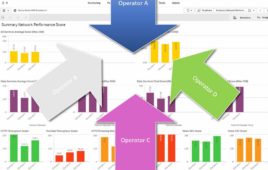The FCC today adopted the rules for its upcoming 600 MHz Incentive Auctions, including a band plan that sets forth paired uplink and downlink bands made from 5 MHz “building blocks.”
The FCC said its band plan will limit variations in the amount of spectrum turned over from broadcasters in different geographic areas in hopes of preventing the “least common denominator market’ from limiting the quantity of spectrum we can offer generally across the nation.”
The Competitive Carrier’s Association (CCA) applauded passage of the new rules, specifically for adopting geographic license sizes in Partial Economic Areas (PEAs) that aim to limit the amount of spectrum any one carrier can own in a given market.
CCA President & CEO Steven K. Berry called the vote “historic” and very positive for competitive carriers, especially smaller and rural carriers.
“Creating a spectrum reserve will allow every carrier, large and small, the opportunity to bid in the auction, which is critically important given the superior propagation characteristics of low-band spectrum,” Berry said.
The band plan also accommodates “reasonable” guard bands, including a duplex gap in between the uplink and downlink spectrum, and opens the guard bands to unlicensed use nationwide. Dependent on the amount of spectrum repurposed from broadcasters, the FCC will make available 14-28 MHz of guard band available. Additionally, the Commission authorized unlicensed use of 6 MHz in Channel 37 in locations where incumbent services aren’t using the channel.
The band plan will not relocate Wireless Medical Telemetry Service or the Radio Astronomy Service from channel 37, but other incumbent services in the television band, like low-power television, may be displaced, according to the FCC. Broadcasters willingly participating in the auction with have 39 months from the start of the repacking process to clear their spectrum. Broadcasters will need to cease operations, move from UHF to VHF, or share a different channel.
The National Associations of Broadcasters was not pleased with the auction rules set by the FCC.
“We are disappointed that today’s vote fails the mandate of Congress to hold harmless those broadcasters who choose not to participate in the spectrum auction,” NAB Executive Vice President of Communications Dennis Wharton said in a statement.
As for the bidders going after the repurposed 600 MHz spectrum, they can expect technical and service rules like the ones ruling the 700 MHz band.
That means device interoperability throughout the 600 MHz band. New licensees will also be subject to a network build-out timetable requiring coverage of “40 percent of the population in their service areas within six years and to 75 percent of the population by the end of their initial license terms of 12 years.”




